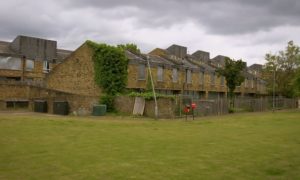It is no secret that as we go about our day-to-day activities manoeuvring through the streets of London, we are often blindsided by the sudden influx of luxury apartments. So where did all these new houses appear from? I can’t tell you that, but I can tell you why. It is down to one word: Gentrification, which is defined online as follows:
The process whereby the character of a poor urban area is changed by wealthier people moving in, improving housing, and attracting new businesses, often displacing current inhabitants in the process.
Whether it be a block of new apartments above a Sainsbury’s local or an unfinished building site, we have all experienced the gentrification of our urban environment.
But while gentrification is said to save some neighbourhoods, it is not always that simple. So let’s explore the good, the bad and the sad.
The Good
Gentrification can lead to a reduction in crime, and an improvement in schools. It also leads to house prices going up, which is good for some – though not so good for those who are driven out of the area by these hikes.
Bringing in new homes also brings in new residents, changing the population mix. Regeneration usually includes an influx of new businesses including independent shops, cafes andsrestaurants, which in turn puts money back into the area. With these businesses comes jobs, and more opportunities for people to get employment. At its best gentrigication triggers a positive domino effect.
The Bad
A negative of gentrification is that the ‘poor’ area it takes over is usually populated by low-income individuals and familes, often from minoritry communities who live there because of structural inequality.
The arrival of wealthier people is likely to push house prices up, as well as commercial rents. This can force small businnesses to close, and some residents to move away from the area, whether to cheaper areas of London or out of the capital completely.
Gentrification also alters a neighbourhood’s vibe, sometimes turning it into an area of smart houses and new blocks with no character and little sense of community. It is a kind of loss of history, with the people who used to define the area moving away and the local businesses that have been in the family for years having to close for ever.
Unless you are a rich overseas businessman who can afford 200k+ outright to purchase a flat, or you have rich parents to pay for it for you, you most probably won’t be able to afford a flat in the towers going up over East London and eslewhere. Some social housing and affordable hosuing is also being built, but not enough.
The Sad
The sad part is quite personal to me. The Myatt’s Field estate I grew up on in Brixton has been a victim of gentrification. With my grandmother actually living on the estate and my home being about five minutes away, I saw the whole process with my own eyes. A £150M development took five years – from 2012 to 2017 – to completely change my area.
The redevelopment included 305 replacement new-build council homes, 172 refurbished council homes, 146 new affordable shared ownership homes, and 357 new homes for sale. There are also new streets, numerous football pitches and green spaces. Out of the thousands of residents who lived in the old estate, only 305 of them moved onto the new estate, and 172 households were provided with a new kitchen/bathroom.
The pictures below show how dramatic the change has been.


Despite how modern the area looks now, I can’t help but feel that I have lost a little piece of my childhood. Some of the green areas I used to run around as a girl have been replaced with concrete buildings.
Where the community was once close-knit, now not one face is recognisable. The area where you once heard children laughing and playing has been replaced by an eerie silence only interrupted by the occasional car passing by.
It’s true that there used to be high levels of crime and gang violence, and this gave the estate a bad reputation. But although the old estate was not perfect, there was still a sense of community, and there must be other ways of reducing crime than pushing out settled families.
In the film below I have interspersed images of the way the estate used to look, with the way it is now.

